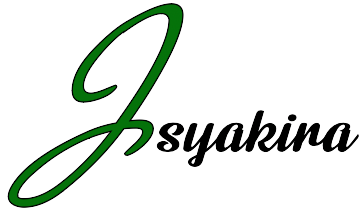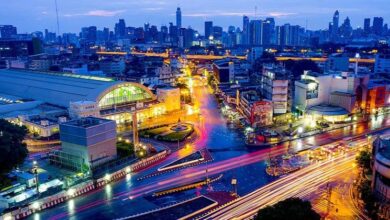Introduction
Dynamic cab fare, also known as surge pricing, is a strategy used by ride-hailing companies like Ola, Uber, and Namma Yatri to adjust prices in real-time based on various factors. This strategy is primarily based on the data science discipline of real-time analytics, a topic covered in detail in any data science course in Bangalore, Mumbai, Chennai and such bustling cities where businesses need to work with dynamic data.
How Ride-Hailing Companies Leverage Data Science
Here is how leading ride-hailing companies leverage data science to calculate fares:
Real-Time Demand and Supply Analysis
Demand Prediction: Data scientists use historical ride data, time of day, day of the week, and special events to predict demand. For example, demand is typically higher during rush hours, weekends, and special events like concerts or sports matches.
Supply Monitoring: The availability of drivers in a given area is continuously monitored. When demand outstrips supply, surge pricing is triggered to balance the two.
Geolocation and Traffic Data
Traffic Conditions: Real-time traffic data is analysed to estimate travel times more accurately. If traffic is heavy, fares may increase to compensate for the additional time drivers spend on the road. Traffic conditions change rapidly and experts who have completed a data science course are engaged to generate information about current traffic conditions and calculate fares based on this information.
Geographical Zones: Different areas may have different base rates depending on factors like population density, economic activity, and historical ride data.
Machine Learning Algorithms
Dynamic Pricing Models: Machine learning models are trained on large datasets to predict the optimal fare based on current and historical data. These models can quickly adjust prices as new data comes in.
Personalised Pricing: Some platforms may use machine learning to offer personalised pricing based on user behaviour, such as ride frequency and preferred routes.
Event and Weather Data
Special Events: Data on local events, like concerts, sports games, or public holidays, is integrated into the pricing algorithms. Surge pricing is often higher during these times due to increased demand.
Weather Conditions: Bad weather conditions (such as rain, snow) can lead to higher demand for rides and consequently higher fares.
User Behaviour Analytics
Ride History: Analysing a user’s past behaviour, such as their typical travel times and routes, can help predict when they are likely to need a ride and adjust pricing accordingly. Ride history is a crucial parameter in determining personalised pricing strategies, which is an important topic covered in a data science course as part of customer retention strategies.
App Interactions: Data on how users interact with the app, like frequent searches for rides, can indicate potential demand spikes.
Incentives and Promotions
Driver Incentives: To encourage drivers to move to high-demand areas, ride-hailing companies might offer incentives. These are calculated based on predicted demand and current driver distribution.
User Promotions: Special discounts or offers can be used strategically to increase demand in specific areas or during off-peak hours.
Competitive Analysis
Competition Analysis: In cities like Bangalore competition is quite tough and unless innovative strategies and attractive offers are involved time and again, businesses cannot sustain. Most businesses rely on the expertise of professional data analysts who have the learning from a data science course in Bangalore to ensure that their business keeps running profitably.
Market Dynamics: Data on competitors’ pricing and availability is also considered. If a competitor has fewer drivers available, a ride-hailing company might adjust its prices to attract more users.
Examples and Case Studies
Uber’s Surge Pricing
Algorithm: Uber uses a surge pricing algorithm that multiplies the base fare by a factor that increases with demand. This factor is calculated using real-time data on ride requests and driver availability.
Visualisation: The app displays a heatmap showing areas with higher surge prices, encouraging drivers to move to these locations to meet demand.
Ola’s Peak Pricing
Implementation: Ola’s peak pricing adjusts fares based on real-time demand and supply metrics. Users are notified of higher fares due to peak demand, and the app suggests alternatives like waiting for a few minutes when prices might drop.
Namma Yatri’s Dynamic Fare Model
Local Adaptation: Namma Yatri, catering specifically to the local market, uses similar data-driven techniques but often adapts them to regional preferences and behaviours, ensuring the pricing model resonates with local users.
Conclusion
Dynamic cab fare calculation by companies like Ola, Uber, and Namma Yatri is a sophisticated process driven by data science. By analysing real-time data on demand and supply, traffic conditions, user behaviour, and external factors like weather and events, these companies can optimise pricing to balance demand, ensure driver availability, and maximise revenue. This dynamic approach not only helps in managing the immediate demand-supply balance but also enhances the overall user experience by reducing wait times and improving ride availability. Engaging the services of data science professionals who have the domain knowledge and the learning from a quality data science course thus creates a win-win situation for businesses and their customers.
For more details visit us:
Name: ExcelR – Data Science, Generative AI, Artificial Intelligence Course in Bangalore
Address: Unit No. T-2 4th Floor, Raja Ikon Sy, No.89/1 Munnekolala, Village, Marathahalli – Sarjapur Outer Ring Rd, above Yes Bank, Marathahalli, Bengaluru, Karnataka 560037
Phone: 087929 28623
Email: [email protected]





